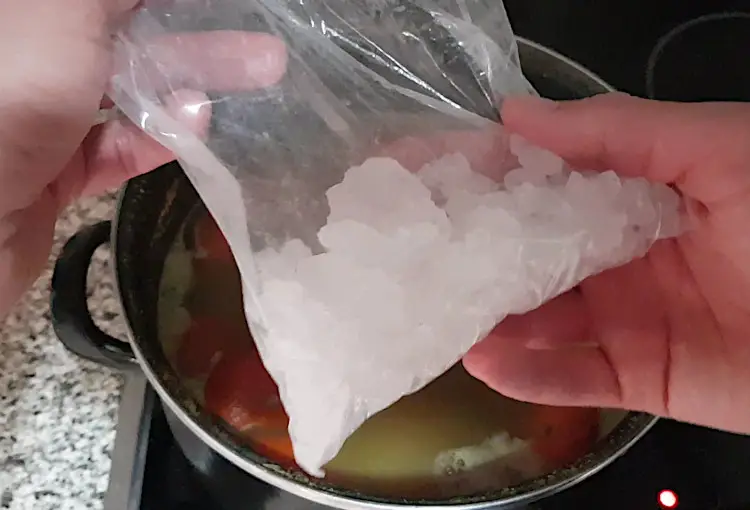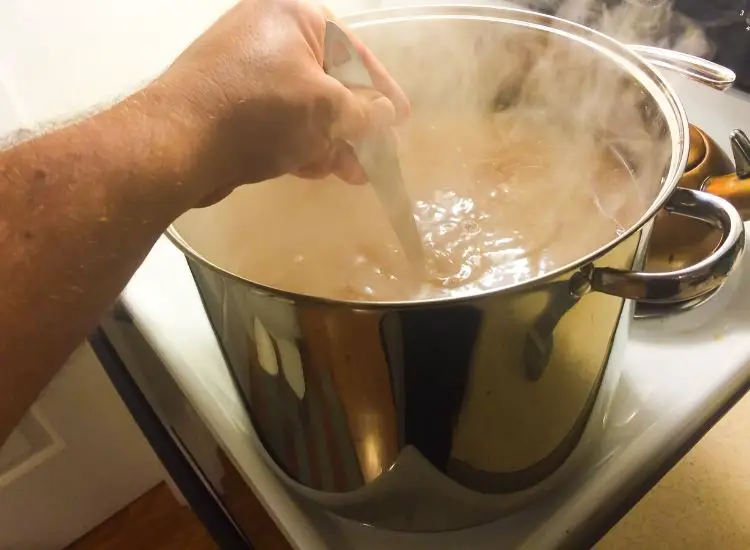Homebrewing is typically for personal consumption or for people who are learning about how to brew. There are only a few ingredients needed to make beer at home – malts, water, yeast, and hops. Some people like to add sugar, as well.
When there is too much sugar added to your brew, and it has slowed down the fermentation process, the best thing to do is to add more yeast nutrients that will help push through the fermentation process. Another option is to just go with it and hope for a yummy outcome.
When creating your homebrew, you can follow a recipe, or you can create your own with trial and error.
Many people like to add extra ingredients to alter the way their homebrew looks and tastes.
Sugar is one of those beneficial ingredients for helping the fermentation process and increasing ABV.
Read on to find out what to do if you add too much sugar to your homebrew.
What’s Needed for Homebrewing?
Homebrewing doesn’t require a bunch of sophisticated ingredients, as some people may think.
Beer is made with malts, water, yeast, and hops.
It is how you mix your brew and how much of each ingredient you put into it that makes homebrewing more complicated.
Standard ingredients for homebrew include the following:
- Malts are malted grains. Barley is the most common grain used for brewing beer because it can provide more beneficial sugars than any other grain. Wheat, corn, rye, oats, and rice are other grains brewers add to their mixtures.
- Hops are green buds that give a brew its bitterness. Adding this bitterness to the brew helps counterbalance the sweet. Hops also act as a preservative to keep beer fresh for longer. When you hear someone say that a beer tastes “hoppy,” they are referring to the number of hops used.
- Yeast is what brings the brew together to create a solid beer. The yeast eats the sugar and begins the fermenting process that creates carbon dioxide and then turns the sugar to alcohol.
Adding Sugar
Because the alcohol in beer is created by the yeast consuming the natural sugars in the brew, some people will add extra sugar to increase the alcohol by volume (ABV). Some people wonder why they can’t just add more grains to increase the sugars in the brew, but adding more grains will alter the recipe completely. Adding actual sugar will not alter the entire composition of the brew.
Sugars can also be added to a brew as a way to introduce different flavors or change the color and body. Many types of sugars can be added, simple or complex. But to increase the ABV, corn sugar is most commonly used.
Corn sugar is a simple sugar that is derived from corn. It is entirely fermentable for yeast. Yeast has a harder time breaking down other forms of sugar because it has first to break the bond between glucose and fructose. Other sugars sometimes process at different rates, so the same results every time is not guaranteed.
Other than increasing ABV and adding flavor, some brewers will add sugar to their beer because they feel like the fermentation process has slowed down or didn’t finish.
Note: Sometimes, when fermentation slows down, it is because the temperatures were too cold for the yeast. So, before jumping to the sugar solution, you should try warming it up and give it a gentle stir to wake up the yeast.
What Happens if you Add Too Much Sugar
Adding sugars to your homebrew can be constructive, but adding too much sugar can make the brew go downhill. The general rule of thumb is to add no more than 10% of your grain bill. You will know you have added too much sugar if your homebrew has fermented vigorously for a few days.
For five gallons of beer, you can add ¾ cups of corn sugar, 2/3 cups of table sugar, or ½ to one cup of honey or another sugar substitute. Here is a good calculator that helps you figure out how much sugar you should add.
If there is too much sugar for the yeast to be able to ferment, then you will end up with something on the sweet side that resembles a cider. This isn’t always a bad thing, but it can be disappointing if you were looking forward to something else.
Another downfall of adding too much sugar to your homebrew is that it will increase the level of CO2, creating an overly carbonated beer. Not only will this create an unpleasant bubbly brew, but it can also lead to a beer that doesn’t taste good.
What to do When Too Much Sugar is Added
When you add too much sugar to beer, it’ll increase the alcohol content, but the yeast is not able to keep up with fermenting it. When the alcohol content increases, the fermentation process decreases.
The best thing you can do when this happens is to add more of the yeast nutrients you added to your brew, which will give the existing yeast the ability to push through the fermentation. Doing this will most likely alter the way your original recipe tasted, but it won’t completely ruin the intended taste.
A typical amount of yeast nutrients to use is one teaspoon per three gallons of beer. You can pitch it anytime between the time the brew has reached full activity and a day or two after it has settled.
The other option is to do nothing and wait and see how it turns out. After all, experimentation is what homebrewing is all about. Too much sugar will lead to a sweeter outcome, but it may be a nice treat.
Before adding sugar to your brew, you should split up your batch so that you can compare tastes. Sometimes you need to wait it out and see what happens, and other times you just need more sugar. If you accidentally add too much sugar to one half, you’ll know to add less for the second half.
Alternatives to Using Sugar

If you are wanting to add more food for your homebrew yeast, but don’t want to add corn sugar or table sugar, there are other alternatives you can use. These alternatives are typically used to add flavor and color to the beer:
- Maple syrup – Used to create different flavors
- Honey – Add different flavors and aromas
- Candi sugar – Creates malty “biere de garde” style flavor
- Brown sugar – Creates a more caramel flavor
- Molasses – Creates bold flavors and dark colors
- Cane sugar – Used for priming and can increase the gravity
- Panela – Takes longer to ferment but creates a rich caramel flavor
- Lactose sugar – Non-fermentable but creates a sweetness in milk and sweet stouts
Brown sugar, maple syrup, and molasses are excellent additives for brown ales, Belgian ales, and stouts. Because simple sugars, like table sugar, will most likely ferment out completely, they are best used for creating a dry finish in Belgian ales, pale ales, and darker beers.
Instead of using sugar, many homebrewers will use a dry malt extract. When adding these alternatives, you should keep in mind that they will most likely alter the taste of your recipe. It may lead to a great thing, but it may also lead to a lousy homebrew taste.
If you are wanting to add sugar to your brew as a sweetener and not to increase ABV and fermentation, using lactose sugar is a great alternative. Milk sugar is non-fermentable, so it’ll only increase the sweetness.
Conclusion
There are a few reasons as to why someone would add sugar to their homebrew. It can help with fermentation, add flavors, and also increase the alcohol content in the beer.
But when trying out homebrews, it is possible to read a recipe wrong or accidentally add too much sugar.
When too much sugar is added, the yeast isn’t able to convert it all to alcohol.
The beer will end up tasting sweet like a cider.
You can try to fix the issue by adding more yeast to your homebrew.
The extra yeast will help to finish fermenting that residual sugar.
